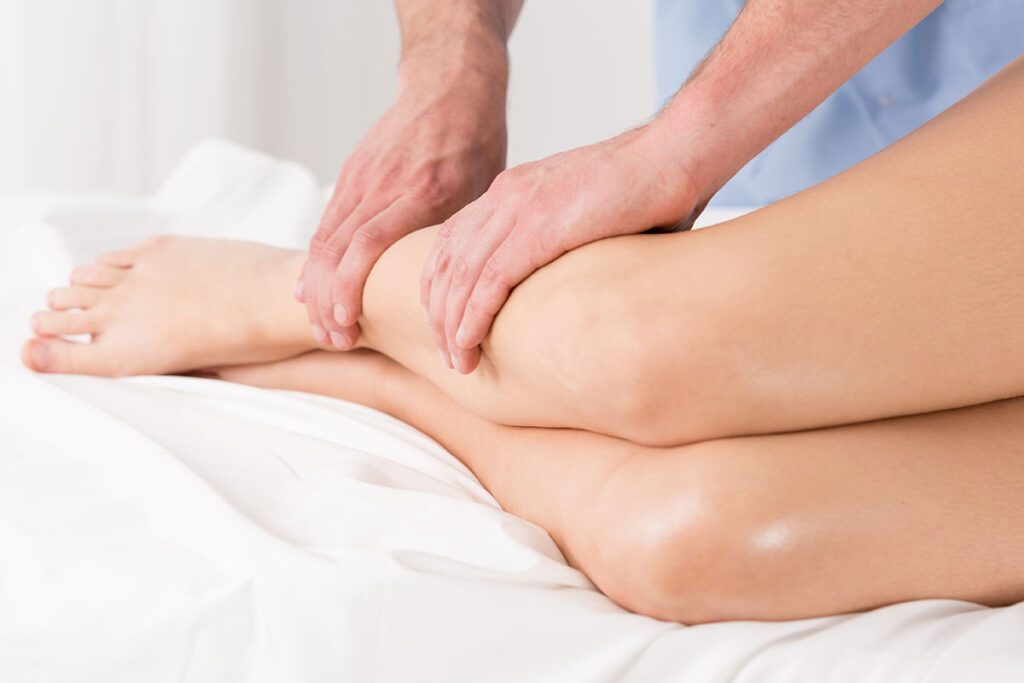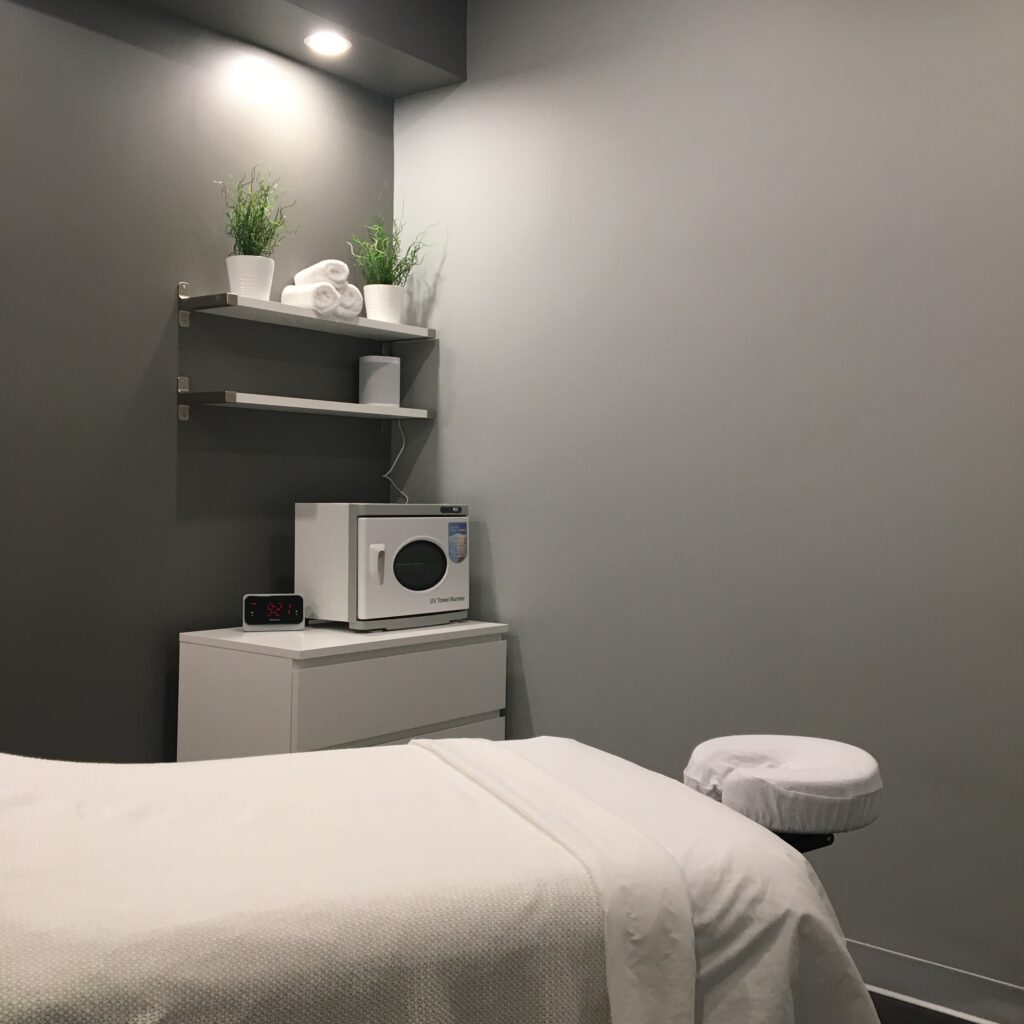A lymphatic drainage massage directly targets our lymphatic system through gentle, yet precise therapeutic techniques. Not only is this type of massage a popular choice because of the benefits it offers the body, but many individuals diagnosed with disorders such as lymphedema, arthritis and fibromyalgia, and those who experience symptoms like swelling, pain, stress, fatigue and stiff muscles, turn to lymphatic drainage to aid in treatment.
This article will dive into what the lymphatic system is, how a lymphatic drainage massage works, and the overall benefits lymphatic drainage can provide. If you have questions about this type of massage, or about any of our other services, be sure to contact a Massage Experts near you. As well, please contact your doctor before receiving any type of treatment.
The Function of the Lymphatic System
To understand what lymphatic drainage is, we must first understand the lymphatic system. As part of our immune system, the lymphatic system is a network full of tissues, organs and vessels that function together to transport fluid, which is called lymph, back to the bloodstream.
The lymphatic system has several key functions:
- Collects excess fluid that releases from cells and tissues throughout the body, which it sends back into the bloodstream
- Absorbs fats and proteins from the digestive tract
- Releases white blood cells and other immune cells to help protect the body against foreign particles like bacteria and viruses
- Aids in the transportation and removal of waste products from the lymph
There are several parts to the lymphatic system, including lymph, lymph nodes, lymphatic vessels, and lymphatic ducts, as well as the spleen, thymus, tonsils and adenoids, bone marrow, peyer’s patches, and appendix. Each works simultaneously within our lymphatic system to protect our body
Did you know you have approximately 600 lymph nodes in your body? While a normal lymph node is small and firm, some individuals can experience infected lymph nodes. Infected lymph nodes can become swollen and/or enlarged as a result of inflammation, or an accumulation of fluid as a result of blockage in a lymphatic vessel.
When lymph nodes are blocked, it can cause serious health concerns and maintaining treatment can be especially important.
What is Lymphedema?
When lymph (which is fluid) moves through the lymphatic system, there can be blockages that create excess fluid in the body’s tissues that lead to edema (aka swelling). As a result, individuals who experience this can be diagnosed with the long-term condition called lymphedema, which is most commonly experienced in the arms or legs. There are two reasons for lymphedema. People with primary lymphedema are born with it. Secondary lymphedema may develop from damage to the lymphatic system via cancer or post-surgery.
When there is a disruption to the lymphatic system, which can occur for many reasons, it impacts how the body drains fluid. As a result, excess fluid can accumulate in several parts of the body. Some of the symptoms of lymphedema include:
- Heaviness or tightness in the arms or legs
- Restricted range of motion
- Discomfort or aches and pains in the affected limb
- Swelling in the upper extremities like the head or neck
- Swelling in part or the entire leg or arm
How Does Lymphatic Drainage Work?
Lymphatic drainage is a type of massage where a Registered Massage Therapist (RMT) uses gentle, rhythmic movements to carefully stretch the skin and tissues of the affected area toward the direction of lymph flow (lymph flows in one direction, which is upward toward the neck).
By doing this, a RMT can have a direct effect on the body’s capillaries, which are tiny vessels in most organs of the body that transport lymph (fluid) to cells and tissues within the body. Lymphatic capillaries help prevent fluid buildup, so it is important that they remain functioning normally.
There are several techniques that an RMT can use during a lymphatic drainage massage, these techniques use light or very minimal pressure, such as sweeping motions, circular hand motions, or hand motions to collect the lymph before redirecting it throughout the body. Depending on the areas of concern, the RMT will target the lymph nodes and drain the fluid that exists, and there is a common two-step process: clearing, which releases the lymphatic fluid, and reabsorption, which moves the fluid (lymph) to the lymph nodes.
While lymphatic drainage is a great aid in treatment for those who are diagnosed with lymphedema, this type of massage is available for many individuals, as there can be a number of reasons for swelling throughout the body. Even those with no health concerns can benefit from lymphatic drainage to give the lymphatic system a bit of a boost.
The Benefits of a Lymphatic Drainage Massage
Besides helping treat swelling, which in itself can provide immense relief, lymphatic drainage can help provide relief from joint pain and stiffness, which those with rheumatoid arthritis experience, as well as chronic muscle and joint pain, which those diagnosed with fibromyalgia frequently experience. Other conditions such as lipedema (when excess fat builds up in the lower body causing a blockage in the lymphatic pathways) and chronic venous insufficiency (when the walls of veins within the legs do not function properly) can also use lymphatic drainage as part of treatment.
Book Your Lymphatic Drainage Massage with Massage Experts
If you are interested in a lymphatic drainage massage, please contact a Massage Experts near you, and our team can work with you on the best treatment plan for your healing and wellness goals.

